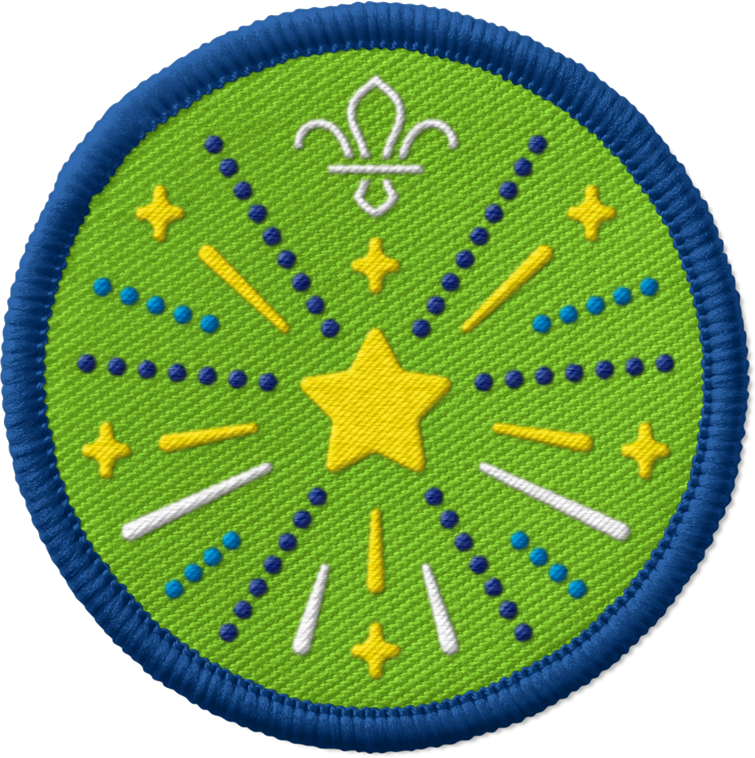
Make a clay mandala
You’ll need
- Some examples of mandala patterns (optional)
- Air-drying clay
- A mixed selection of objects
- Strong glue
- PVC tablecloths or mats to protect tables
- Rolling pin
- Blunt plastic knife or circle-shaped cookie cutter
Before you begin
- Use the safety checklist to help you plan and risk assess your activity. There's also more guidance to help you carry out your risk assessment, including examples.
- Make sure all young people and adults involved in the activity know how to take part safely.
- Make sure you’ll have enough adult helpers. You may need some parents and carers to help.
Planning and setting up this activity
- Gather together lots of long-lasting materials, such as different sizes and types of beans, buttons, beads, craft shells, craft pebbles or gems. For example, you could use a mix of dried beans, such as soybeans, black beans, kidney beans, chickpeas, red beans, lima beans and pinto beans.
- Clay can be messy – you may want to ask people to bring an apron or wear something they don’t mind getting dirty.
- If you don’t want to use clay, you could stick the items down onto card using a strong glue, such as PVA glue, or just place them on the floor.
Running this activity
- Gather everyone together in a circle and ask if anyone knows what a mandala is. If anyone does, let them explain. You could print off some examples of mandalas to show everyone.
- Tell everyone that a mandala is a special, circular design used in Buddhism and Hinduism, two religions that began in India thousands of years ago. They’re used for prayer and meditation to help people feel calm and focused. The word ‘mandala’ means ‘circle’ in Sanskrit, an old Indian language. Mandalas have symmetrical patterns and are made up of three layers, each with its own meaning.
- Explain that everyone’s going to create mandalas using clay. They should try to include a central point, have three different layers and aim for it to be symmetrical.
- Give out the materials. You could place them in pots, grouping the same type of items together.
- Hand everyone a small ball of air-drying clay and ask everyone to flatten it into a round disc, either with their hands or with a rolling pin.
- When the clay’s flat, cut out a circle using a large biscuit cutter or a blunt plastic knife.
- Let everyone make their mandala. People should try to create a symmetrical pattern by carefully placing their materials on top of the clay. They can do this however they want. They can place and push the items into the clue, use the items to create imprints on the clay that are then painted, or they could carve a design into a clay.
- When they’re finished, leave their clay to dry in a safe space. Always follow the packaging instructions of where to place the clay and how long to leave it. Some items may become loose, but glue can be used to reattach them.
- Any unused clay can be kept wrapped in clingfilm, inside a zip-lock bag and placed in an airtight container. Avoid storing clay to which water has been added.
Reflection
This simple pattern making activity is fun and produces amazing results. How did you feel when you were making your pattern? Was it easy to keep your pattern symmetrical?
Why do you think people like to decorate their homes with these patterns during special occasions? Where are you going to put yours?
Safety
All activities must be safely managed. You must complete a thorough risk assessment and take appropriate steps to reduce risk. Use the safety checklist to help you plan and risk assess your activity. Always get approval for the activity, and have suitable supervision and an InTouch process.
- Glue and solvents
Always supervise young people appropriately when they’re using glue and solvent products. Make sure there’s plenty of ventilation. Be aware of any medical conditions that could be affected by glue or solvent use and make adjustments as needed.
- To make this activity easier, you could pre-roll and cut the clay into discs. You can also have some examples or templates for people to copy.
- People may want to work in pairs for this activity.
- Some people may not like the feel of clay. They could wear gloves. Alternatively, if you don’t want to use clay, you could create a pattern and stick the items down onto coloured card using a strong glue, such as PVA glue.
- Keeping symmetrical patterns can be a challenge for some young people. They may want to make their own design.
All Scout activities should be inclusive and accessible.
You could make a larger mandala as a group. How could you display it in the local community?




